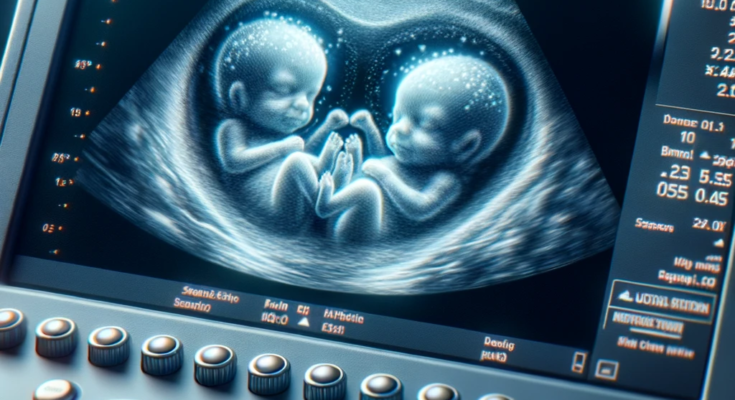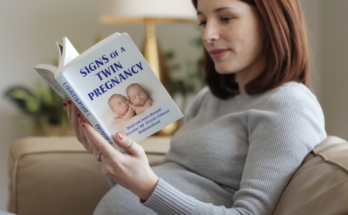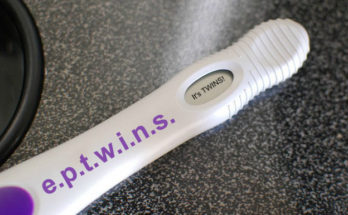Having twins can be an exciting prospect for many prospective parents. While the occurrence of twins can often be chalked up to chance, there are certain factors that can influence the likelihood of a twin pregnancy. These range from genetics and age to dietary habits and medical interventions. In this article, we’ll explore these factors and provide tips on potentially increasing your chances of having twins.
Understanding the Odds
Twins can be identical (monozygotic) or fraternal (dizygotic). Identical twins occur when one fertilized egg splits into two embryos, while fraternal twins result from the fertilization of two separate eggs during the same pregnancy. There is no reliable way to naturally increase the chance of having identical twins. Fraternal twins, on the other hand, are slightly more influenced by certain factors, which we’ll explore below.
Genetic Factors
Genetics can play a significant role in the likelihood of conceiving fraternal twins. When we talk about “genetics,” we’re referring to the genes passed down from parents to offspring. In the case of twins, there is a specific genetic trait that can influence the chances of having fraternal twins, which are the result of two separate eggs being fertilized during the same ovulation cycle.
Hyperovulation: A Key Genetic Trait
The primary genetic factor at play when it comes to conceiving fraternal twins is hyperovulation. Hyperovulation is the production and release of more than one egg during a woman’s ovulation cycle. This trait can increase the likelihood of having fraternal twins because there are more eggs available to be fertilized.
Hyperovulation can be passed down genetically, predominantly through the maternal line. This means if a woman’s mother or grandmother was a fraternal twin or had fraternal twins, she might have a higher chance of having fraternal twins herself.
The Role of the Twinning Gene
Researchers believe a specific “twinning gene” may exist that causes hyperovulation. Women who inherit this gene are more likely to hyperovulate, leading to a higher likelihood of having fraternal twins. If this gene is present in a woman’s family, it could increase her chances of having twins.
One study published in the American Journal of Human Genetics in 2016 found a link between a specific genetic variant in the follicle-stimulating hormone receptor (FSHB) gene and an increased likelihood of having fraternal twins. [1] The study identified a variant in the FSHB gene that was more common in mothers of fraternal twins. The FSHB gene plays a critical role in regulating the production and release of eggs during a woman’s menstrual cycle. The identified genetic variant is thought to increase sensitivity to follicle-stimulating hormone, leading to a higher chance of releasing multiple eggs during ovulation and thus increasing the likelihood of conceiving fraternal twins.
While the occurrence of fraternal twins can be influenced by genetics, identical twins are generally considered to occur by chance. Identical twins result from a single fertilized egg that splits into two embryos, and this process is not thought to be genetically influenced.
The Role of Age and Fertility
The age of a woman plays a significant role in fertility and also influences the likelihood of conceiving twins. As women age, changes occur in the body that can affect both the chance of getting pregnant and the probability of a twin pregnancy.
Age and Overall Fertility
The peak reproductive years for women are typically in their late teens and twenties. During this period, fertility is at its highest. Starting in the early thirties and accelerating after age 35, a woman’s fertility begins to decline. This decline is due to a decrease in the number of eggs in the ovaries and a decrease in egg quality.
However, while overall fertility decreases with age, the chance of conceiving twins increases. This seeming contradiction can be explained by the body’s response to decreasing fertility: the production of more Follicle Stimulating Hormone (FSH).
Age, FSH, and Twin Pregnancies
FSH is the hormone responsible for the growth and development of eggs in the ovaries during the menstrual cycle. As women age, especially those in their mid-thirties and forties, the body may begin to produce more FSH in response to declining fertility. This increased FSH can sometimes stimulate the ovaries to release more than one egg during a cycle, a condition known as hyperovulation.
Hyperovulation increases the chances of more than one egg being fertilized and implanting in the uterus, leading to a fraternal twin pregnancy. Therefore, while women over 35 may experience a decrease in overall fertility, they have a higher chance of having twins.
Age-Related Risks
While the likelihood of conceiving twins increases with age, it’s important to note that pregnancy risks also increase for women over 35. These can include a higher chance of gestational diabetes, high blood pressure, chromosomal abnormalities, and complications during delivery.
Moreover, pregnancies with twins are considered higher risk than singleton pregnancies, with potential complications including preterm birth and low birth weight.
The Role of Assisted Reproductive Technolgoy
Many women who have children later in life use assisted reproductive technologies (ART) like IVF to help them conceive. Since these techniques often involve the transfer of multiple embryos to the uterus, they significantly increase the chance of a twin pregnancy.
Age plays a complex role in fertility and twin pregnancies. While the chances of conceiving twins naturally increase as women age, due to increased production of FSH and hyperovulation, overall fertility decreases, and pregnancy risks rise. Therefore, anyone considering pregnancy later in life, or hoping for twins, should consult with a healthcare provider to understand the implications fully and to receive personalized advice.
Dietary Influences
While there’s no certain “twin conception diet” that guarantees the conception of twins, some studies suggest that certain dietary factors might influence the likelihood of having twins. It’s crucial to bear in mind that while these dietary influences may play a role, they represent only a small piece of the complex puzzle that determines twin pregnancies.
Dairy Consumption
One of the most frequently mentioned dietary factors associated with twin pregnancies is dairy consumption. A study by Dr. Gary Steinman, a physician at Long Island Jewish Medical Center, found that women who consume animal products, particularly dairy, are five times more likely to have twins. [2]
Steinman’s theory is that this could be because of Insulin-like Growth Factor (IGF), a protein that is released from the liver of animals — including humans — in response to growth hormone, increases the sensitivity of the ovaries to follicle stimulating hormone, thereby increasing ovulation. Some of this IGF makes its way into the animal’s milk, and so, it’s theorized, women who consume these products have higher levels of IGF in their system, possibly increasing their chances of releasing more than one egg during ovulation.
Folic Acid
Another dietary element that might be linked with twin pregnancies is folic acid, a type of B vitamin. Some research has suggested that women who take folic acid supplements before becoming pregnant are more likely to conceive twins. However, it’s important to note that the research in this area is not entirely conclusive, and more studies are needed to confirm this relationship.
Folic acid is recommended for all women of childbearing age since it significantly reduces the chances of neural tube defects in babies. So, taking it won’t just potentially increase your chances of twins, but it’s also beneficial for any pregnancy.
Higher Caloric Intake and BMI
Research has also shown a correlation between a woman’s Body Mass Index (BMI), caloric intake, and the likelihood of twin pregnancies. A study published in the Journal of Reproductive Medicine found that women with a BMI above 30 had a higher chance of having fraternal twins. Another study in the American Journal of Clinical Nutrition suggested that women who consume more calories and who eat a wider range of nutrients have a slightly higher chance of conceiving twins.
However, it’s essential to approach this information with caution. A higher BMI is also associated with health risks, including gestational diabetes and hypertension. It’s always important to focus on balanced, nutritious eating rather than merely increasing calorie intake.
The potential influence of diet on conceiving twins is intriguing but should be viewed as part of a larger fertility picture. All the dietary factors mentioned should be balanced with overall health considerations. Before making significant dietary changes or starting any supplement regimen, it’s important to consult with a healthcare provider to understand the potential impacts fully. Remember, the primary goal should always be to support the healthiest possible pregnancy — whether that results in one baby or two.
Medical Interventions
Medical interventions can significantly increase the chances of having a twin pregnancy. These interventions are often used to assist those who may have difficulty conceiving due to fertility issues. Let’s explore some of the most common medical interventions and how they influence the probability of twins.
Fertility Drugs
Fertility drugs like Clomiphene (Clomid) and Gonadotropins (such as FSH and LH) are often the first step in fertility treatment. These drugs work by stimulating the ovaries to produce and release more eggs. The increase in the number of eggs released increases the likelihood of multiple eggs being fertilized, resulting in a fraternal twin or multiple pregnancy.
However, it’s important to note that fertility drugs also increase the risk of higher-order multiples (triplets or more), which come with higher pregnancy risks.
In Vitro Fertilization (IVF)
n vitro fertilization (IVF) involves retrieving mature eggs from a woman’s ovaries, fertilizing them in a lab, and then implanting one or more embryos into the woman’s uterus.
Historically, multiple embryos were often transferred during IVF to increase the likelihood of a successful pregnancy. This practice led to a significant increase in the rate of twin and multiple pregnancies among women undergoing IVF.
However, advancements in IVF techniques and a better understanding of the risks associated with multiple pregnancies have led many fertility clinics to adopt a single embryo transfer (SET) policy whenever possible. While this has led to a decrease in twin pregnancies resulting from IVF, the chances of having twins are still higher with IVF than with natural conception, especially if more than one embryo is transferred.
Intracytoplasmic Sperm Injection (ICSI)
ICSI is a variant of IVF where a single sperm is injected directly into an egg to achieve fertilization. While the primary goal of ICSI is to increase the chances of fertilization, the process of embryo transfer remains the same as in traditional IVF. Thus, the likelihood of having twins with ICSI is similar to that of conventional IVF and depends on the number of embryos transferred.
While there are certain factors and strategies that can increase your chances of having twins, it’s important to remember that many elements are simply down to chance. Maintaining a healthy lifestyle and seeking professional medical advice is crucial when planning for pregnancy, whether you’re hoping for twins or a single baby. Be sure to consult with a healthcare provider to understand your unique fertility profile and discuss any strategies you’re considering. Twins or not, the most important thing is a healthy pregnancy and baby.
Sources:
[1] Mbarek, H., Steinberg, S., Nyholt, D.R. et al. (2016). Identification of Common Genetic Variants Influencing Spontaneous Dizygotic Twinning and Female Fertility. The American Journal of Human Genetics, 98(5), 898-908. Link
[2] Steinman, G. (2006). Can the chance of having twins be modified by diet? The Lancet, 367(9513), 754-755. Link




